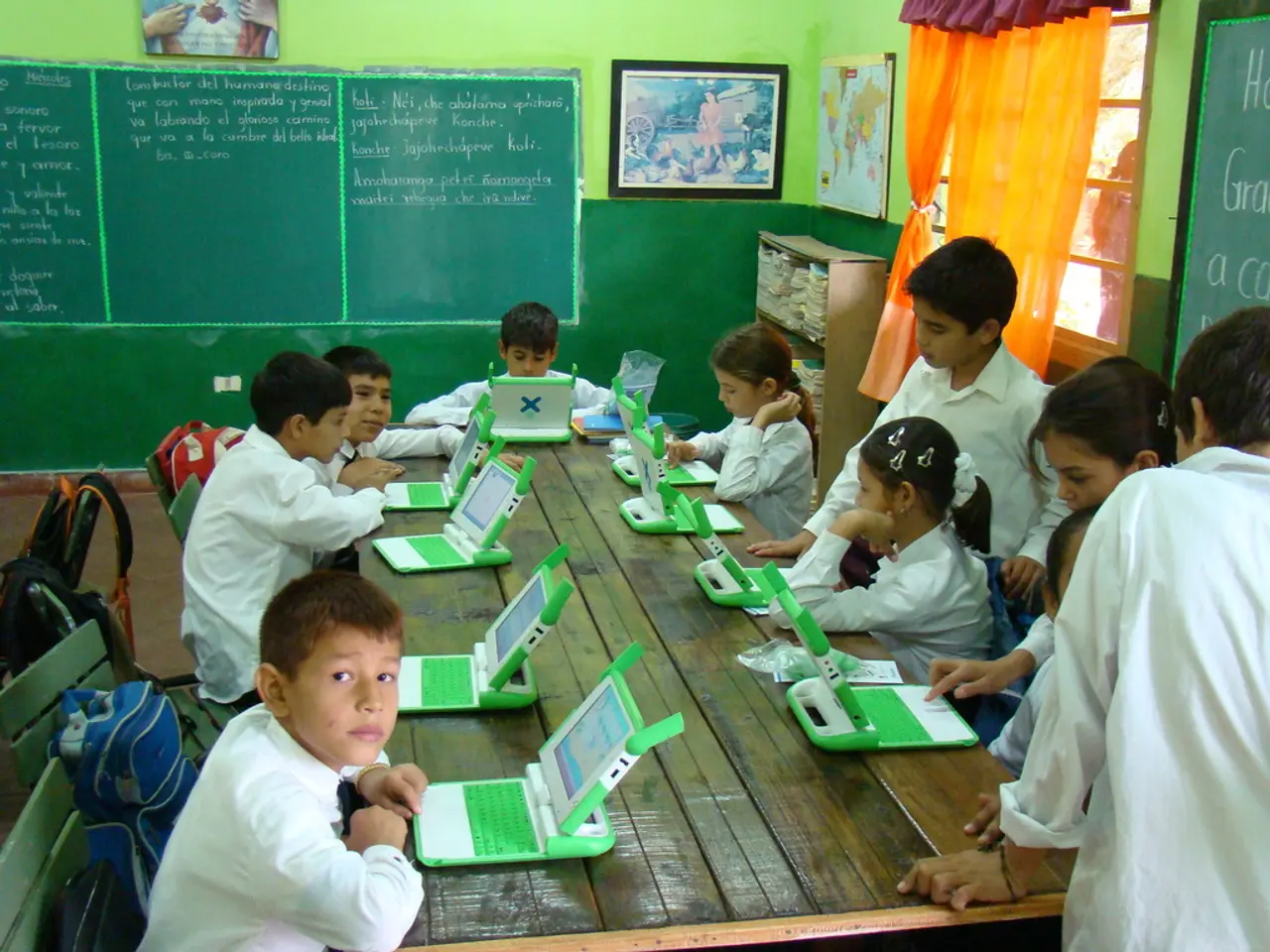Cyber Threats and Deceptive Emails: Essential Information for Educators
In the digital age, schools and districts face unseen digital threats that are often unknown to the average consumer, school district, or human. The COVID-19 pandemic has accelerated the use of technology in education, creating more opportunities for cybersecurity threats.
To address these risks, schools and districts must focus on risk assessment and readiness to strengthen their cybersecurity. A useful tool for evaluating a district's cybersecurity posture is the Cybersecurity Rubric (CR) by the Cybersecurity Coalition for Education (CC4E).
One of the major threats schools face is malware and phishing attacks. Jena Draper, Chief Innovation Officer at itopia, discusses these threats. Malware and phishing attempts are constant and can target students, teachers, administrators, and families.
To protect against these attacks, schools and districts can implement a combination of technical safeguards, strong cyber hygiene practices, user education, and strategic planning. Key measures include:
- Implementing multi-factor authentication (MFA) to ensure that account access requires multiple verification steps.
- Strengthening identity and access management by regularly reviewing and updating user permissions, promptly deactivating accounts of departing personnel, and avoiding over-permissioning.
- Enforcing strong password policies with complexity requirements and regular password rotations.
- Maintaining up-to-date security software such as antivirus and anti-malware tools, ensuring they perform regular scans for threats.
- Upgrading and patching infrastructure like operating systems and software regularly, including legacy devices, to close vulnerabilities.
- Conducting cybersecurity awareness training for all staff and students to recognize phishing attempts, practice safe browsing, and maintain vigilance against social engineering tactics.
- Developing and testing incident response plans so everyone knows how to react quickly and effectively to cyber events, minimizing damage.
- Adopting a multi-layered defense strategy using firewalls, encryption, endpoint protection, and regular backups to safeguard data and ensure continuity if an attack occurs.
- Fostering collaboration with external partners such as regional cybersecurity centers and peer districts to share threat intelligence, best practices, and response strategies.
- Promoting safe user habits, including cautious use of public Wi-Fi networks, using VPNs when necessary, restricting app permissions on devices, and promptly reporting suspicious activity.
Building a culture of continuous cyber hygiene—making security part of daily routines and continuous education—is critical to adapt to evolving threats and reduce risks effectively across the entire school community.
Moreover, teachers can contribute to cybersecurity in the classroom by implementing relevant activities and lessons. In the past 90 days, itopia has blocked 15.961 million malware threats, highlighting the importance of vigilance in the digital educational environment.
By combining these technical, educational, and organizational steps, schools and districts can create a robust cybersecurity posture to defend against malware, phishing, and other malicious intrusions.
- In the digital age, schools and districts are learning to address unseen digital threats due to the rapid increase in technology use, especially with the COVID-19 pandemic.
- The Cybersecurity Rubric by the Cybersecurity Coalition for Education (CC4E) is a valuable tool for school districts, helping them evaluate their cybersecurity posture effectively.
- Jena Draper stresses the importance of protecting students, teachers, administrators, and families from malware and phishing attacks, which are constant threats in the digital learning environment.
- To build a robust cybersecurity posture, schools and districts can adopt measures such as multi-factor authentication, strong password policies, regular security software updates, and ongoing cybersecurity awareness training for both staff and students.




